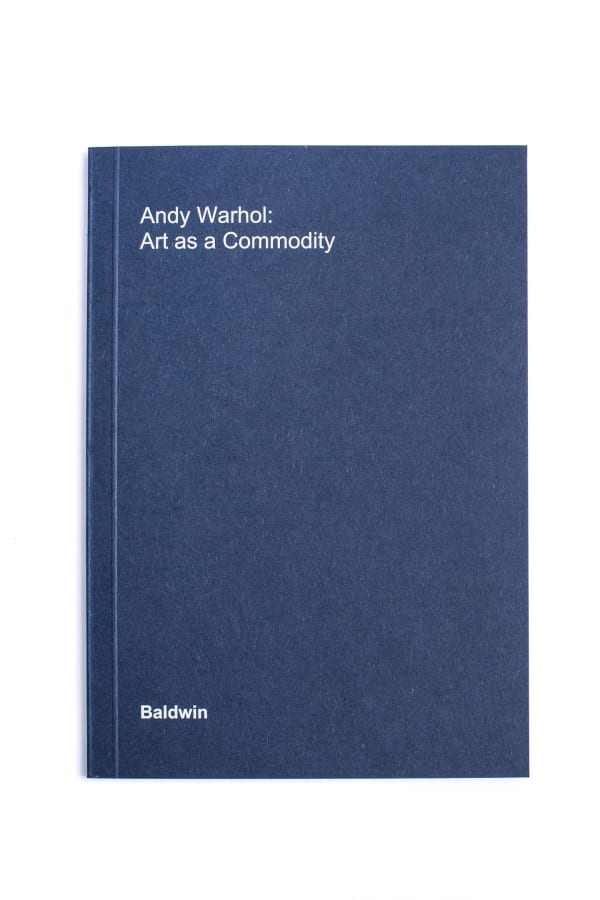Andy Warhol U.S.A, 1928-1987
"Making money is art and working is art and good business is the best art"
-Andy Warhol
Andy Warhol revolutionized modern art, radically altering the relationship of art to notions of authorship and commodity, and blurring the boundaries between performance, photography, painting, and sculpture. Warhol's innovations, which have now become familiar artistic techniques, confounded traditional notions of what an artist did (Warhol outsourced much of his work to assistants) and what artistic subject matter could be. Using reproductions of common, commercially available images from advertising and the celebrity press, Warhol presented art as one commodity among many, an act filled with equal parts indifferent boredom, ingenious marketing, and celebration. He was lauded as a mirror of contemporary American culture, in which, he predicted, everyone would experience (or want to experience), "15 minutes of fame," to use a phrase he coined.
The fourth son of working-class Slovak immigrants, Warhol (born Andrew Warhola) grew up in Pittsburgh, Pennsylvania. He attended the Carnegie Technical Institute and, in 1949, moved to New York to pursue work as a commercial artist.
Beginning in the 1950s, Warhol began to experiment with presenting mass-produced advertising images as artwork. An early painting depicted a bottle of Coca-Cola, rendered in a painterly, expressionistic manner. A second painting of the same image, made with the strait-laced, hard edge exuberance of graphic art, convinced Warhol that earnest reproductions, with a minimum of artistic intervention, could produce fascinating images. Ivan Karp, a curator for Leo Castelli, agreed with Warhol after seeing his two Coke paintings. Karp introduced Warhol to other like-minded artists, including Roy Lichtenstein and James Rosenquist. He was soon showing his work regularly at galleries in New York and Los Angeles and quickly became an enigmatic doyen of the New York scene. (Some critics and artists, especially the abstract expressionists, took great umbrage with Warhol's work, seeing it as antithetical to their ideals and as encouraging of consumerism.)
In the 1960s Warhol mostly abandoned hands-on artistic labor, leaving the work to assistants and friends while he acted as a kind of director. He cultivated a fluctuating cadre of "Superstars"-actors, artists, poets, scenesters, and assorted characters at his infamous Factory studio. Their daily lives were documented by the filmmaker Jonas Mekas, the photographer Billy Name, and by Warhol himself in his films, recordings, and photographs. The Factory was a locus for celebrities, eccentrics, and collectors and its activity helped launch the careers of several other artists during its two-decade existence. Despite this, Warhol was publicly shy and retiring, answering many questions with a quiet, monotone "um," "yeah," or "no."
Much of Warhol's oeuvre is well known, recognizable. His Campbell's Soup cans and images of flowers, portraits of Marilyn Monroe, John Wayne, and Elizabeth Taylor, and his Brillo boxes have become as iconic as the images from which they derive and seem saturated with his critical banality. Less known, perhaps, are much darker images by Warhol: horrific car crashes, erotic male nudes, collaborations with Keith Haring or Jean-Michel Basquiat, portraits of Vladimir Lenin, and so on. His 1973 series of silkscreened portraits of Mao Zedong, founder and Chairman of the People's Republic of China, perhaps captures much of Warhol's varied ideas. Made one year after President Richard Nixon and Secretary of State Henry Kissinger met with Mao and opened China to US trade, and three years prior to Mao's death, the portrait uses as its template the picture of the dictator then ubiquitous in China, depicting him as a benevolent technocrat. Despite Warhol's fervid colors and vibrant lines, Mao is stoic and stares blankly, possibly ignorant of the millions of deaths then occurring as a result of policies implemented during the Great Leap Forward. Although Mao was a theorist of Communism, his iconic, celebrity-like image is revealed by Warhol to be a highly marketable and consumable sign with an ambiguous, easily displaced cultural and monetary value. And, Warhol's identification of Mao in the superstar, consumerist pantheon presages the new China, with its rising middle class and effectively capitalist economy that has rapidly developed since the nation was opened to foreign trade.
In 1969, he founded the magazine Interview and, in 1979, the New York Academy of Art. In 1968 he survived an assassination attempt by disgruntled Factory hanger-on and radical feminist Valerie Solanas. He barely survived the attack, which left him with persistent health problems. Sadly, after Warhol's work and influence became more solidified, thoughtful, and rich in the 1980s, in 1987 he entered New York Hospital for a routine gallbladder operation, but suffered an unexpected cardiac arrhythmia, which caused his death at the age of 58.



